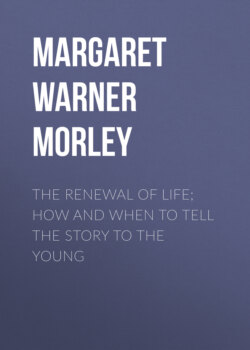Читать книгу The Renewal of Life; How and When to Tell the Story to the Young - Margaret Warner Morley - Страница 7
When to tell the story.
ОглавлениеIt is an axiom of education that the foundations of knowledge should be laid in childhood. From all time it has been observed that what is learned in the earlier years remains most persistently through life. Hence we begin to inculcate moral truths at an early age. Ideas of truthfulness and honesty, for instance, are graven so deeply on the young mind that they can never afterwards be erased. "Just as the twig is bent the tree's inclined," said our forefathers, and it is true. "First impressions are the most lasting," is another true adage. This being so, we should see to it that the first impression the child gets on the subject in question is the one we wish him to keep. Many a life has been lamed and saddened because of the first terrible and ineradicable impressions it received upon this all-important subject. Many a high-minded man and woman have gone through life tormented by images of the first unworthy thoughts. No matter how good the after-knowledge may be, it is almost impossible to erase from the tablets of memory that old first impression.
Of course it would be absurd to tell a young child most of the facts, just as it would be absurd to try to teach him the whole arithmetic in one school term. He could not understand, and, particularly in the case of the former subject, he would be harmed instead of helped. Just how and when to unfold the matter to his comprehension will be carefully considered as these pages progress. Here let it suffice to say that with the young child we may begin by building carefully block by block the foundation we want to use later; with the older one we must needs work faster, seeking to anticipate or counteract any unfortunate information from outside sources. Thus the age of the child and his surroundings will to an extent determine the time or times of telling the facts.
